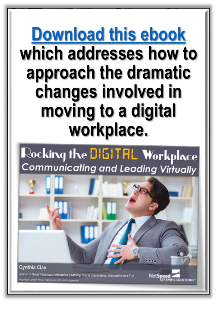Cynthia Clay's Blog
Resilience and Renewal in 2021
Wednesday, January 27, 2021

As we begin a new year, I am reflecting back on the challenges and unexpected opportunities of 2020. The word I am carrying in my heart and mind is resilience. One definition of resilience is, “the ability to be happy and successful again after something difficult or bad has happened.” When we are resilient, we spring back after being pushed. Many people and organizations have had to make rapid, sometimes dramatic, changes to survive in this past year. Many of us are in grief over the people we have lost through layoffs or illness.
I am inspired by a local company, Savor Seattle, that used to lead tourists on personal tours all over downtown Seattle, where they could sample beverages, snacks, and local history at various restaurants. When the pandemic hit, the owner, Angela Shen, realized that not only would a restaurant closure due to COVID restrictions scuttle her business, but it would also damage the local small businesses and farmers in Pike Place Market. From adversity, Angela realized opportunity. She pivoted from her original business model to keep her employees working in a new venture. Now they create locally sourced boxes filled with delicious treats, flowers, and gifts from a variety of farmers, craftsmen, and restaurateurs in the Seattle area. If you can’t come to Seattle, they will bring Seattle to you! Due to her efforts, the company doubled in business revenue in 2020. On their journey, they donated a portion of their profits to benefit small businesses. Amazingly, Angela just sold Savor Seattle to a new owner who will continue to serve their mission. I love this story because it embodies what it means to be resilient during adversity. They are great models for thriving no matter what.
In the NetSpeed Leadership® program, Meeting Change with Resilience, we explore a Cycle of Change model for understanding the four phases of change: Stability, Change, Instability and Rebalancing. We look at how we can increase our resilience in each phase of the change process. As you read through these four phases, I invite you to think of a change you have experienced recently and see if your experience maps to this cycle.
Stability
In the Stability phase, before a change occurs, we feel that we are in control of familiar circumstances. We may feel enthusiastic and committed. We may believe we have mastered a job or that we are masters of our destiny. Many people are quite pleased to remain in this phase because it is safe and familiar. But life often surprises us in the form of unexpected changes.
To be resilient in the Stability phase: Let go of the illusion that this phase is permanent. Prepare for change. Document processes and procedures. Visualize opportunities in the future and prepare to capitalize on them. Put contingency plans in place. Get educated and develop your skills now before change requires it.
Change
In this phase, a change takes place. Change can be driven by our own choices (getting married) or be imposed from outside (being laid off). But no matter how the change happens, it drives us out of the Stability phase. It is common to feel a sense of denial (this cannot be happening, or this won’t impact me) followed by a feeling of disillusionment or disappointment. For larger changes, we may experience the grief that comes with a great loss.
To be resilient in the Change phase: Get as much information as possible about why the change is happening. Allow yourself to feel sad and disappointed. Intentionally, say goodbye to the old ways of doing things. Have a memorial service for the way things used to be so you can celebrate what you have created with others. And get ready to let go of the past.
Instability
In the previous Change phase, we start to come to terms with the strong emotions tied to loss. In the Instability phase, the external structures and forms that we once depended on begin to fall apart. Unfortunately, we may react out of fear in this phase, feeling confused or untethered. We may experience anger and direct it “those people” who caused our discomfort. These feelings can lead us to resist the change and may even result in resistance or sabotage both at work and in our relationships. We may actively refuse to do what is being required of us, digging in our heels, crossing our arms, and attempting to block the change.
To be resilient in the Instability phase: Get with the program or get out. It is not uncommon for people to quit teams or organizations at this phase of the change cycle. Honestly, that may be best for all concerned if they cannot accept what change is calling them to do—that is, expand and develop. Look ahead to the future by getting as much information as possible about where the organization is headed, including what opportunities may be possible for you. The discomfort of the Instability phase may also require that we take care of ourselves by finding a coach, counselor, or mentor who can help us work through our reactions and choices. Take small steps in this phase to begin to move forward. Give up whining, complaining, finger-pointing, and blaming.
In the Rebalancing phase, the small steps we took toward the new future in the Instability phase now reveal possibilities we may not have seen before. This phase is characterized by words like rediscover, refocus, replan, and redirect. We get to this phase by taking action to move forward. The renewal of this phase happens because we have honored (not ignored) our emotional reactions, moved through those difficult feelings, and started to act on new goals and possibilities.
To be resilient in the Rebalancing phase: Notice and celebrate new opportunities. Applaud yourself and others for progress. Focus on what you want to achieve or build, not on what you have lost or given up. Notice feelings of optimism, and pat yourself on the back for surviving the challenging change you just moved through. Mine the whole experience for lessons learned that will serve you in the next change cycle.
This Change Cycle applies to large and small changes in all aspects of our lives: personal, professional, governmental, and familial. We can be resilient no matter what is happening around us. We are not the victim of circumstances.
If you would like to increase your resilience in the virtual workplace, download our ebook, Rocking the Digital Workplace - Communicating and Leading Virtually. This ebook addresses how to approach the dramatic changes involved in moving to a digital workplace, using cloud-based applications and document management, and covers issues around virtual leadership, digital communication practices, and how to resolve conflict that often emerges in these disconnected settings.
Posted by Cynthia Clay at 2:11 pm





